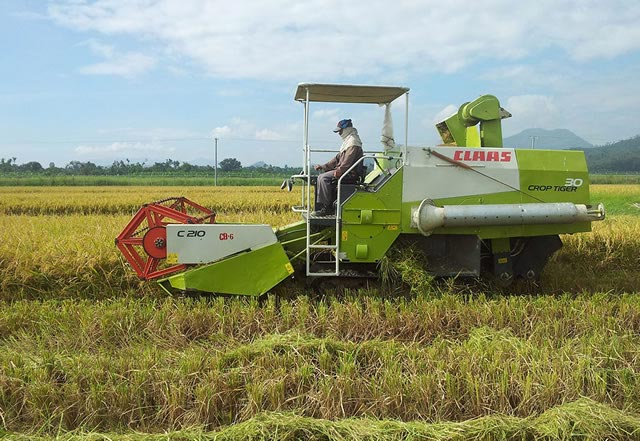Combine harvesting
 In India, China, Thailand, Vietnam and even in Cambodia the use of combine harvesters, or simply combines, for paddy rice is increasing rapidly. This is a development due to severe labor shortage and the resulting increase in harvesting cost, which makes the use of combines economically attractive.
In India, China, Thailand, Vietnam and even in Cambodia the use of combine harvesters, or simply combines, for paddy rice is increasing rapidly. This is a development due to severe labor shortage and the resulting increase in harvesting cost, which makes the use of combines economically attractive.
Combine harvesting combines several operations into one: cutting the crop, feeding it into threshing mechanism, threshing, cleaning, and discharging rain into a bulk wagon or directly into a bags. Straw is usually discharged behind the combine in a windrow.
Guidelines for good combine harvesting methods
- Timing of combine harvesting
Harvest at the correct time (20−25% moisture content or when 80% of the grains are straw colored and at least 20% of the grains at the panicle base have reached hard dough stage). The time interval for harvesting by combine harvester is often narrow: too early harvesting will result in a high percentage of immature kernels, and too late harvesting will result in high shattering losses. - Machine adjustment
Set the threshing speed according to the machine specifications (check the operator's manual) based on the grain moisture content, volume of material entering into the combine, weeds, etc. Operating thresher speed either too fast or too slow reduces profit. - Fine tuning forward speed and header height is especially important to minimize field loss.
Read: Combine harvesting health and safety
Examples of combines common in Asia